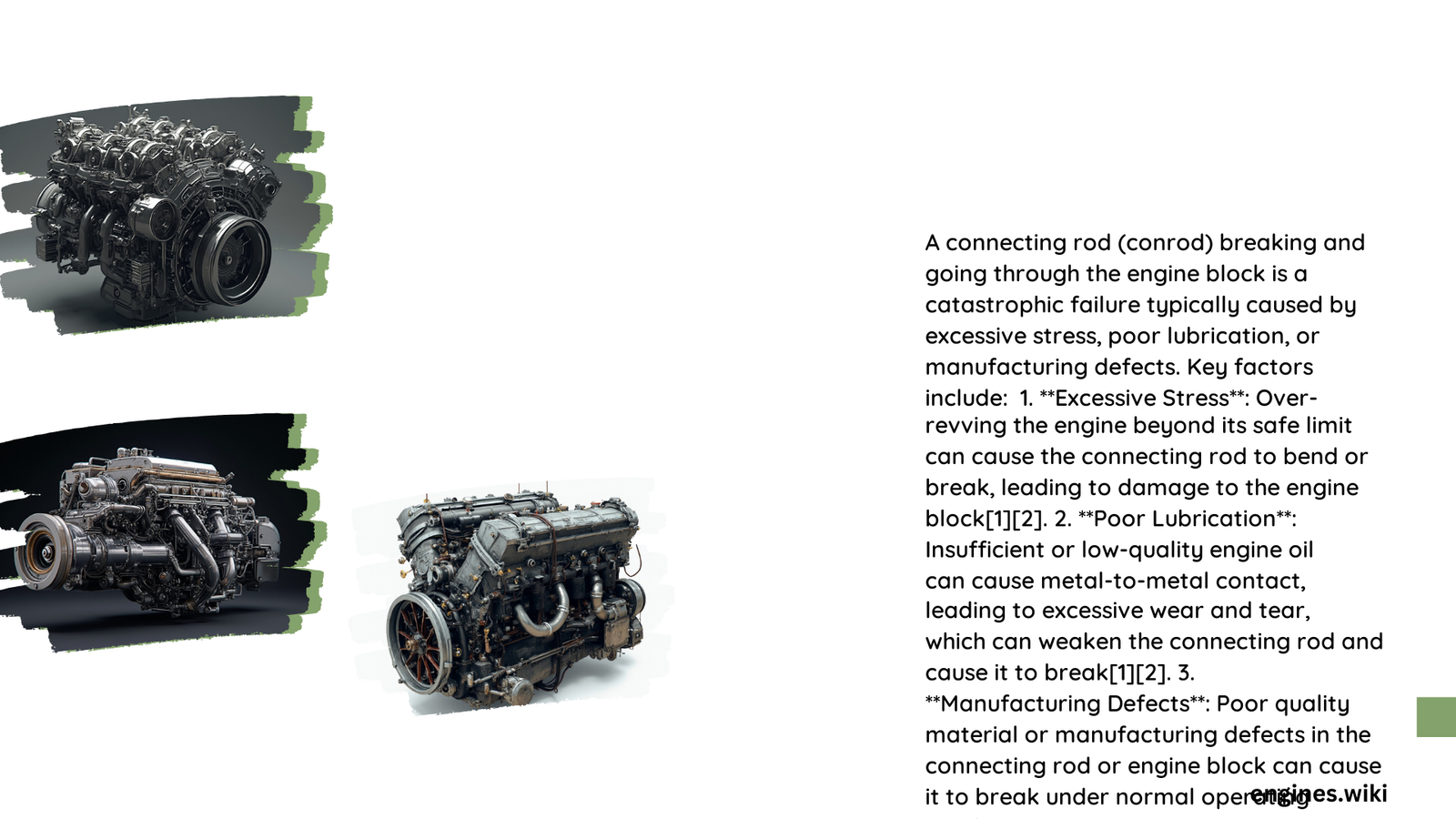The conrod through engine block process represents a critical junction in engine assembly, where precision engineering meets mechanical performance. Connecting rod installation demands meticulous attention to detail, involving complex measurements, alignment tolerances, and specialized techniques that ensure optimal engine functionality and longevity. Automotive engineers and mechanics must navigate intricate specifications to guarantee seamless integration of connecting rods within the engine block’s structural framework.
What Makes Conrod Through Engine Block Critical?
Connecting rods serve as the crucial mechanical link between pistons and crankshaft, transforming linear motion into rotational power. Their precise installation requires understanding complex engineering principles and maintaining extremely tight manufacturing tolerances.
Key Technical Specifications for Conrod Installation
| Parameter | Typical Range | Critical Considerations |
|---|---|---|
| Bearing Clearance | 0.001-0.003 inches | Prevents premature wear |
| Rod Length Tolerance | ±0.005 inches | Ensures proper piston travel |
| Bolt Torque | 20-30 ft-lbs | Prevents structural failure |
How Do Machinists Prepare Engine Block for Conrod?

Surface Preparation Techniques
- Thorough Cleaning
- Use specialized industrial solvents
- Remove all manufacturing residues
-
Ensure zero contamination
-
Precision Measurement
- Utilize micrometers
- Check cylinder bore roundness
- Verify surface flatness within microns
Alignment and Tolerance Requirements
Conrod installation demands microscopic precision:
– Small end centering: ±0.0005 inches
– Big end journal alignment: Critical for smooth operation
– Perpendicularity of rod axis: Maximum deviation of 0.001 inches
What Tools Ensure Accurate Conrod Installation?
Essential equipment includes:
– Dial bore gauges
– Torque angle wrenches
– Plastigage measurement tools
– Ring compressors
– Precision alignment fixtures
What Are Common Installation Challenges?
Potential Complications
- Misaligned bearing surfaces
- Insufficient lubrication
- Incorrect torque application
- Contamination during assembly
Mitigation Strategies
- Use high-quality assembly lubricants
- Follow manufacturer-specific torque sequences
- Implement clean room assembly protocols
- Utilize calibrated measurement tools
What Performance Impacts Result from Improper Installation?
Incorrect conrod through engine block installation can lead to:
– Accelerated component wear
– Reduced engine efficiency
– Potential catastrophic failure
– Increased friction and heat generation
Recommended Best Practices
- Always use new bearings during reassembly
- Verify clearances before final installation
- Follow manufacturer’s exact specifications
- Conduct thorough post-installation inspection
Technical Insights for Advanced Practitioners
Professional-level considerations include:
– Material compatibility between conrod and engine block
– Thermal expansion characteristics
– Dynamic load distribution
– Metallurgical interface requirements
Precision Measurement Techniques
- Utilize non-contact measurement technologies
- Implement statistical process control
- Develop comprehensive documentation
Conclusion
Successful conrod through engine block installation represents the pinnacle of mechanical precision, requiring deep technical knowledge, specialized tools, and unwavering attention to detail.
